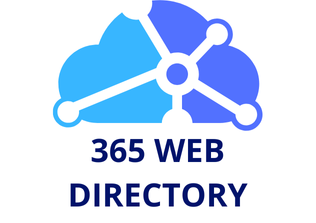Creating a successful startup hinges on a well-structured MVP timeline. Efficient development not only accelerates market entry but also highlights your product’s value proposition. This guide outlines key phases, common pitfalls, and best practices to navigate the MVP journey. Streamline your process and maximize impact by focusing on core functionalities, selecting the right technology stack, and utilizing the expertise of seasoned developers. Let’s explore how to craft an effective MVP timeline for your startup’s success.
Understanding the MVP Timeline
A well-structured Minimum Viable Product (MVP) timeline is essential for startup success. It comprises key development stages—from concept to launch—ensuring startups maintain a competitive edge. In this timeline, critical stages include idea planning, design & prototyping, development, testing, and ultimately, deployment & feedback.
Additional reading : What are the best practices for implementing rate limiting in a RESTful API?
Idea & Planning Phase takes about 1 to 2 weeks. This involves thorough market research and creating user personas to clearly define the project’s goals. An MVP development roadmap is also crafted during this period.
The Design & Prototyping stage lasts 7 to 11 days and involves creating wireframes and interactive prototypes. It’s pivotal for establishing a robust UI/UX foundation.
In the same genre : What are the best practices for managing Docker Secrets in a Swarm cluster?
During the Development Phase, spanning 4 to 8 weeks, front-end and back-end code creation are tackled, emphasizing the product’s core functionalities. This stage focuses on efficiency by selecting the right technological tools.
To ensure quality, Testing & Quality Assurance follows, usually lasting 1 to 2 weeks. It involves exhaustive testing to streamline the user experience before final rollout.
For those seeking a reliable partner, opting for MVP development services such as https://www.realistack.com/ can significantly streamline these processes, allowing startups to focus on refining their business strategy and market positioning.
Steps to Develop an MVP Timeline
Idea Generation and Market Research
Developing an MVP roadmap starts with robust idea generation and thorough market research. These steps lay a strong foundation for the MVP planning process by identifying user needs and market gaps. Through extensive research, startups can pinpoint their potential place in the market, ensuring that the MVP development stages effectively address user pain points. This phase includes conducting surveys, analyzing competitor products, and understanding trends that could influence buyer behavior. Market insights should directly inform the core functionalities of the MVP, streamlining decision-making and keeping the focus on essentials.
Design and Prototyping Phase
In this phase, the transition from ideas to tangible designs is critical. Designing an MVP timeline involves creating prototypes that encapsulate the essential features, emphasizing usability and customer satisfaction. This process often includes creating wireframes and interactive prototypes. The aim is to receive early feedback before full-scale development begins, which can influence the MVP project timeline significantly. Efficient prototyping allows for adjustments without costly delays, ultimately optimizing development time and reducing the timeframe for iteration.
Development Methodologies for MVP
Choosing the right development methodologies is paramount for minimizing timelines. Adopting an agile MVP timeline approach ensures that the development is flexible and iterative. This adaptability enables quick responses to changes in project requirements or user feedback. Engaging in MVP feature prioritization is also crucial to maintain focus on delivering core product functionalities. Collaborating closely with stakeholders to set clear milestones and leveraging existing tools can further streamline the process, resulting in a rapid yet effective execution of the MVP strategy.
Strategies for Optimizing MVP Development Time
Agile Team Collaboration Techniques
Efficient collaboration techniques are vital in optimizing MVP development time. A well-coordinated team that uses agile methodologies can swiftly adapt to changes, keeping the project on track. Regular stand-ups and sprint planning sessions ensure everyone is aligned on priorities. Implementing tools like Trello or JIRA can aid in managing tasks and deadlines effectively. Team members should be empowered to make quick decisions, minimizing delays in addressing issues.
Efficient Testing and Feedback Mechanisms
Establishing efficient testing and feedback loops is essential to streamline the MVP development timeline. By automating testing processes, teams can save time and enhance accuracy. Feedback should be collected from actual users early in the process to inform rapid iterations. Incorporating real-time bug tracking systems like Bugzilla can help prioritize fixes and improve the product iteratively.
Addressing Common Roadblocks in MVP Development
Identifying and tackling common MVP timeline pitfalls can prevent unnecessary delays. These include scope creep and integration challenges with third-party services. Defining a clear project scope and leveraging pre-built APIs can mitigate these risks. Regular stakeholder reviews can also ensure any potential timeline deviations are addressed promptly, enabling a successful and timely MVP launch.











